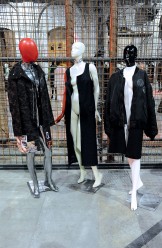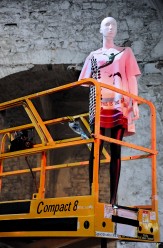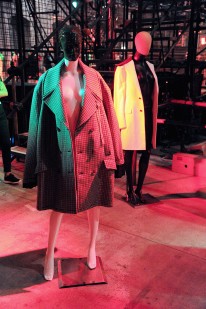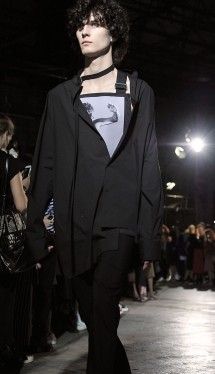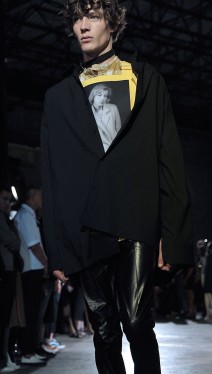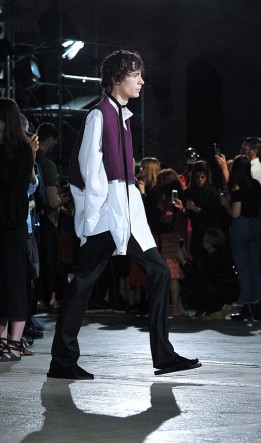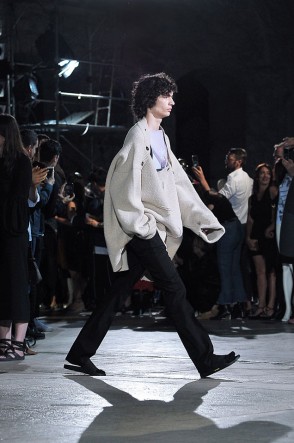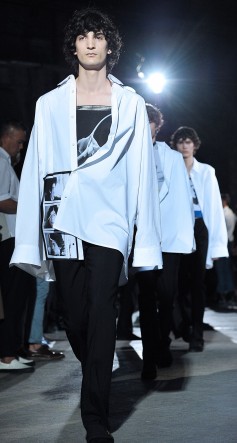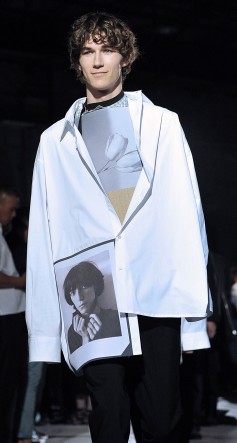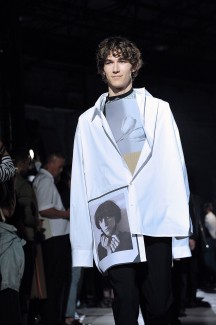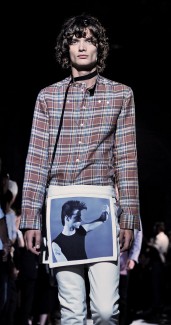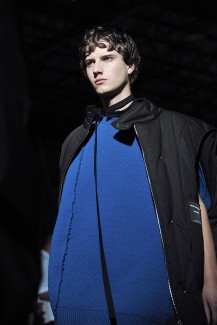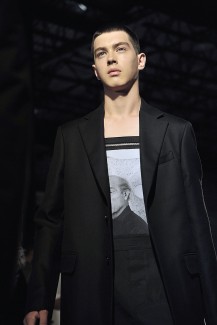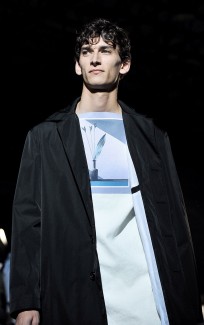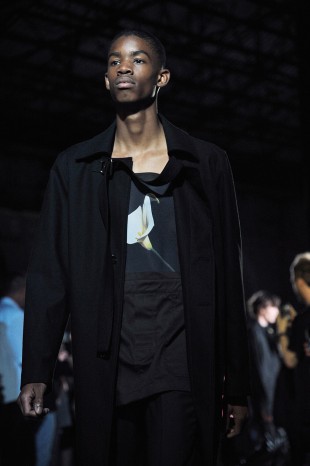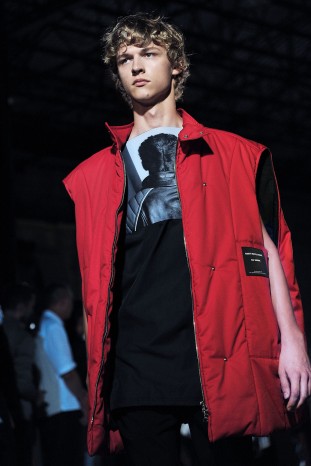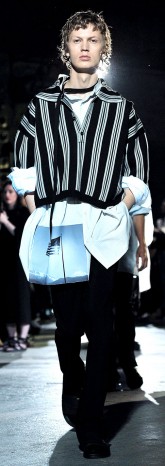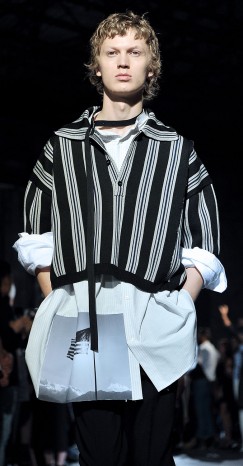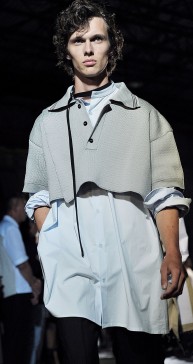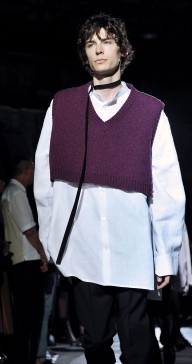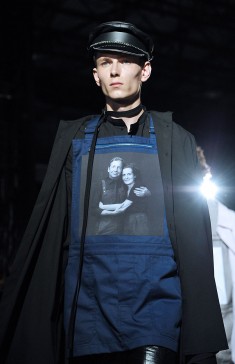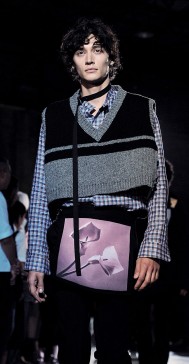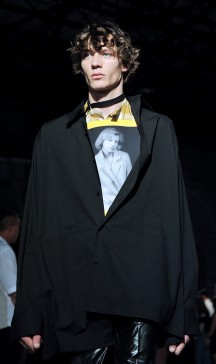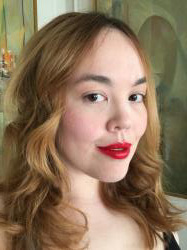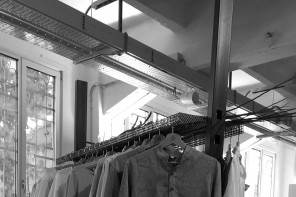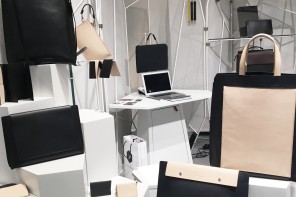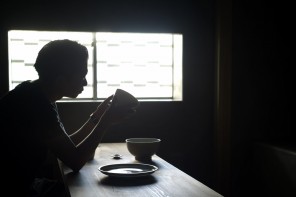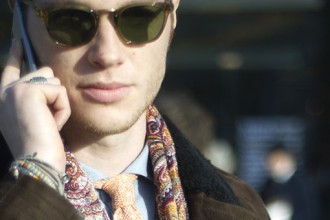Florence, Italy – Raf Simons is a man of his word: he promised he would present his Spring/Summer 2017 show in Pitti, and that’s exactly what he did during the 90th edition of the fair. As is his wont, the designer offered a standing-room-only venue that read as a bisection between an art installation and an underground show. You couldn’t help but wonder the significance of his choice of the Florentine city, given that he only ever flies the Parisian coop for momentous occasions – his exhibition on adolescence in 2003, his brand’s decennial anniversary in 2005 and even the Jil Sander show that put Pitti on the major-brands circuit.
Tellingly, as guests filed into the Stazione Leopolda, the city’s ancient train station and an eye-catching mix of steel beams and concrete that just makes collections stand out just so, an exhibition of a varied selection of previous Simons collections was peppered inside (on the roof and wall niches in the manner of ancient statues) and in the darkened inside (making navigating to a good view spot just that much more perilous). Many of these were from his womenswear silhouettes, placed on mannequins with occasionally-defaced female miens. These days, the meniscus between traditionally male and female attire is ever-thinning if at all present. It pointed to the relationship between creation and creator, and how the latter could so easily dispossessed by outside forces.
As for the show, the immediacy of cult photographer Robert Mapplethorpe’s work, printed on almost every single piece that Raf Simons presented had minds a-twitter. After all, Mapplethorpe is very much in focus this year, thanks to no less than two exhibitions at LACMA and the Getty Museum as well as an HBO documentary. You could practically feel Simons afficionados checking which pieces they would go for. And you could feel how thrilled and awed Simons must have been when the Robert Mapplethorpe estate contacted him to ask him to work with them. He shelved whatever his original idea for the season was and immersed himself in the archives to chart a new narration from the photographer’s body of work.
It’s hardly the first time Simons has collaborated with an artist (he took his bow in that drop-dead gorgeous paint speckled shirt from his Sterling Ruby co-op), but Simons’ exacting selection of Mapplethorpe’s work added a subtext on experimentation of one’s self and sexuality, pleasure and pain, and with perhaps a side-swipe about any design process in the mix. Mapplethorpe’s self-portraits, floral portraits, sexually explicit or implicit figures, strikingly captured souls of his sitters, placed on the designer’s boxy shirts, peeking under a slouching collar or flashing (literally) on a parka, all were reframed in motion. They were more than images printed on fabric, pushed on the runway on models who could have sat for the photographer, with their curly hair and marble skins. Simons’ love for Mapplethorpe’s work came across in how well he animated these images, truly curating them to bring them to live in this flesh-and-blood context.
In the same way that these images were not just Mapplethorpe prints, Simons’ clothes were not just clothes, they were memories. Torn from the pages of a personal journal, the slanted leather caps with trailing leather ribbons around the neck, the oversize jumpers that formed a décolletage or even the aforementioned oversized shirts all spoke of a quiet introspection on the road from youth to maturity. You could feel that in the music that Michel Gaubert mixed to go with this, driving home the deep melancholy of time passing by, of things going askew no matter how hard you try to make them right.
It was hard not to relate this collection to the previous, where Simons made beautiful things that ended up being all wrong and dark, in the way that many tales are spun every which way depending on who is in charge. The models who stalked the sinuous runway were the present, in the same way that each mannequin represented a past that had intrinsic meaning that we, as outside entities, had no choice but to form our own interactions with. Shorthand of what all this meant: any picture is worth a thousand words but it takes an apt pupil to make an image tell its contemporary relevant narrative.
